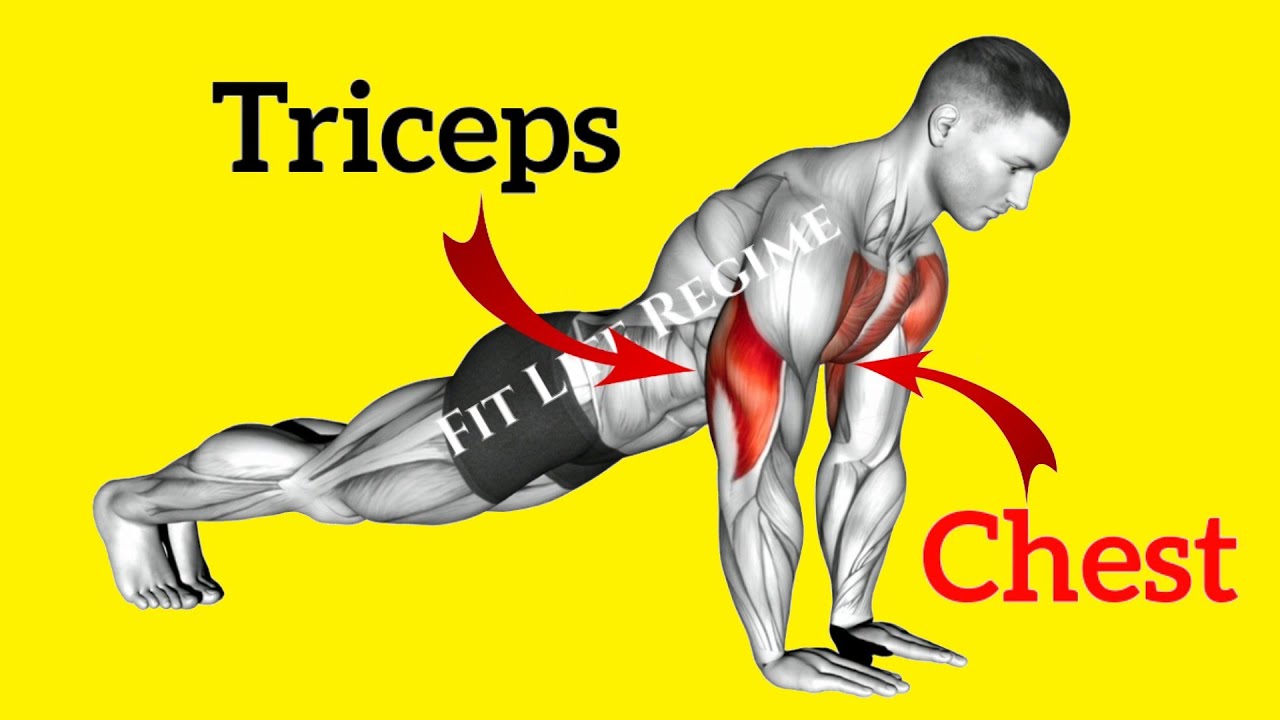Ever notice how most chest and tricep workouts feel like they were copy-pasted from a 1990s muscle magazine? Same old routines, same mediocre results.
Look, I get it. Building an impressive chest and horseshoe triceps seems straightforward: just bench press heavy and do some pushdowns, right?
Wrong.
After diving deep into exercise science and testing countless workout combinations, I’ve discovered something interesting: the best chest and tricep gains come from strategic exercise selection and proper workout structuring.
In this guide, I’m breaking down battle-tested chest and tricep workout plans that work. There is no bro-science, no complexity for complexity’s sake, just proven strategies to build upper body mass and strength.
These workouts will give you the blueprint you need. Let’s get into it.
Beginner-Friendly Chest & Triceps Workout Plan
This exercise is a good place to begin. It is simple yet effective and focuses on fundamental movements that build strength and muscle while mastering proper form.
You’ll learn the key exercises that target both muscle groups efficiently.
| Exercise | Sets | Reps |
|---|---|---|
| Dumbbell Chest Press | 3 | 12-15 |
| Pec Deck Machine (Chest Fly) | 3 | 12-15 |
| Assisted Dips (Dip Machine) | 3 | 10-12 |
| Tricep Rope Pushdowns | 3 | 12-15 |
| Close-Grip Push-Ups | 3 | 15-20 |
Hypertrophy-Focused Chest & Triceps Workout
This workout maximises muscle growth by utilizing moderate-to-heavy weights, higher volume, and progressive overload. The focus is on time under tension (TUT) and controlled reps to stimulate hypertrophy effectively.
| Exercise | Sets | Reps | Rest |
|---|---|---|---|
| Flat Barbell Bench Press (Slow Eccentric) | 4 | 8-12 | 60-90 sec |
| Incline Dumbbell Press | 4 | 8-12 | 60-90 sec |
| Cable Chest Flys (Mid or Low Position) | 3 | 12-15 | 45-60 sec |
| Machine Chest Press (Drop Set on Final Set) | 3 | 10-12 | 45-60 sec |
| Close-Grip Bench Press (Triceps & Chest Focus) | 4 | 8-12 | 60-90 sec |
| Overhead Dumbbell Triceps Extension | 3 | 10-12 | 45-60 sec |
| Rope Tricep Pushdowns (Controlled Reps) | 3 | 12-15 | 45-60 sec |
| Diamond Push-Ups (Burnout Set) | 2 | 15-20 | 30 sec |
✔ Time Under Tension (TUT): Perform slow negatives (eccentric phase of 3-4 seconds) to maximize muscle fiber breakdown.
✔ Moderate-to-Heavy Weight: Train in the 8-12 rep range for compound lifts and 12-15 reps for isolation exercises.
✔ Higher Training Volume: Aim for 4 sets on major lifts to exhaust the chest and triceps fully.
✔ Minimal Rest Periods (45-90 sec): Keeps muscles under continuous stress, promoting hypertrophy.
✔ Drop Sets and burnout Sets are used in the final sets to push muscles past fatigue for maximum growth.
Strength-Focused Chest & Triceps Workout
This workout is designed to build raw strength by focusing on heavy compound movements, low rep ranges, and longer rest periods for maximum power output. It follows a progressive overload approach, ensuring steady strength gains over time.
| Exercise | Sets | Reps | Rest |
|---|---|---|---|
| Barbell Bench Press | 5 | 3-6 | 2-3 min |
| Incline Barbell Press | 4 | 4-6 | 2 min |
| Weighted Dips | 4 | 6-8 | 90 sec |
| Decline Dumbbell Press | 3 | 6-8 | 90 sec |
| Skull Crusher | 4 | 6-8 | 90 sec |
| Cable Tricep Pushdown | 3 | 8-10 | 60 sec |
| Close Grip Bench Press | 3 | 6-8 | 60 sec |
✔ Heavy Weight & Low Reps – Focus on 3-6 reps for compound lifts.
✔ Longer Rest Periods – Allow 90 seconds to 3 minutes for full recovery.
✔ Progressive Overload – Gradually increase weight each week.
✔ Minimal Isolation Movements – Focus on big, multi-joint exercises for maximum strength gains.
Chest & Triceps Superset Workout Plan
This workout combines chest and triceps exercises into supersets. It keeps muscles working hard and strengthens them. You’ll move from one exercise to the next with minimal rest.
It is designed for those who want serious gains without spending hours in the gym: perfect for busy lifters who don’t compromise on results.
| Superset # | Exercise | Reps | Sets |
|---|---|---|---|
| Superset 1 | Bench Press | 10-12 | 4 |
| Close-Grip Bench Press | 10-12 | 4 | |
| Superset 2 | Incline Machine Press | 10-12 | 3 |
| Overhead Rope Triceps Extensions | 12-15 | 3 | |
| Superset 3 | Cable Chest Flys (Mid-Level) | 12-15 | 3 |
| Parallel Bar Dips | 8-12 | 3 | |
| Superset 4 | Decline Dumbbell Press | 10-12 | 3 |
| Skull Crushers (EZ Bar) | 10-12 | 3 | |
| Superset 5 | Decline Push-Ups | 15-20 | 2 |
| Diamond Push-Ups | 15-20 | 2 |
Dumbbell-Only Chest & Triceps Workout Routine
This dumbbell-only workout is perfect for those training at home or in a gym with limited equipment. It focuses on progressive overload, full range of motion, and controlled reps to maximize chest and triceps growth.
| Exercise | Reps | Sets |
|---|---|---|
| Dumbbell Press | 8-12 | 4 |
| Incline Dumbbell Press | 8-12 | 4 |
| Dumbbell Flys (Flat or Incline) | 10-12 | 3 |
| Dumbbell Pullover | 10-12 | 3 |
| Close-Grip Dumbbell Press | 8-12 | 3 |
| Seated Dumbbell Overhead Triceps Extension | 10-12 | 3 |
| Dumbbell Triceps Kickbacks | 12-15 | 3 |
| Diamond Push-Ups (Burnout Set) | 15-20 | 2 |
Bodyweight Chest & Triceps Workout Routine
This bodyweight-only workout is perfect for training at home, on the go, or when you don’t have access to gym equipment. It focuses on doing high reps, controlled movements, and time under tension to build strength and endurance in your chest and triceps.
| Exercise | Reps | Sets |
|---|---|---|
| Standard Push-Ups | 15-20 | 4 |
| Diamond Push-Ups | 12-15 | 4 |
| Incline Push-Ups (Feet on Elevated Surface) | 12-15 | 3 |
| Wide Grip Push-Ups | 12-15 | 3 |
| Archer Push-Ups | 10-12 (each side) | 3 |
| Triceps Dips (On Bench or Parallel Bars) | 12-15 | 3 |
| Pseudo Planche Push-Ups | 10-12 | 3 |
| Explosive (Clap) Push-Ups | 8-12 | 3 |
| Push-Up Burnout Set (Any Variation) | Until Failure | 1 |


